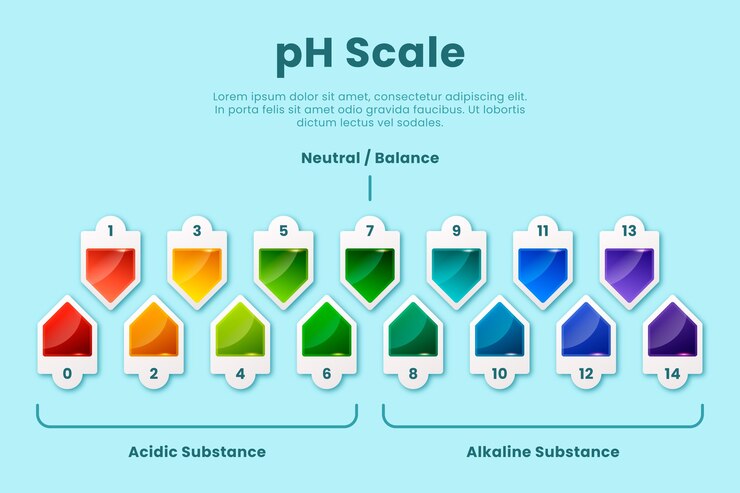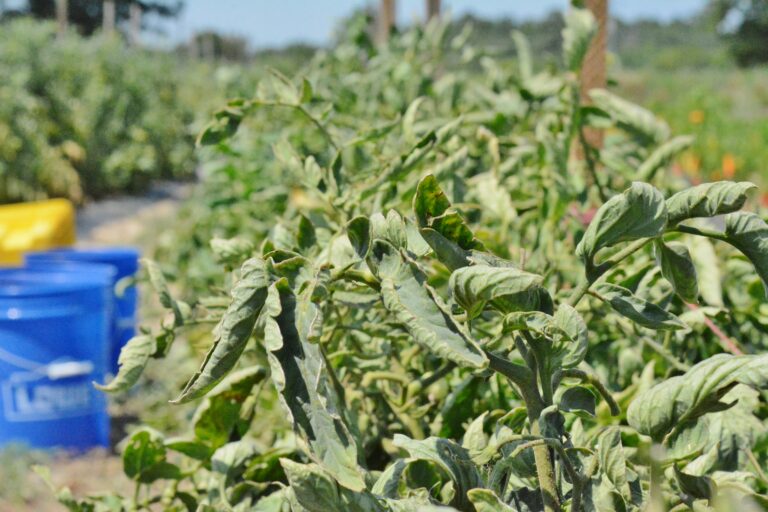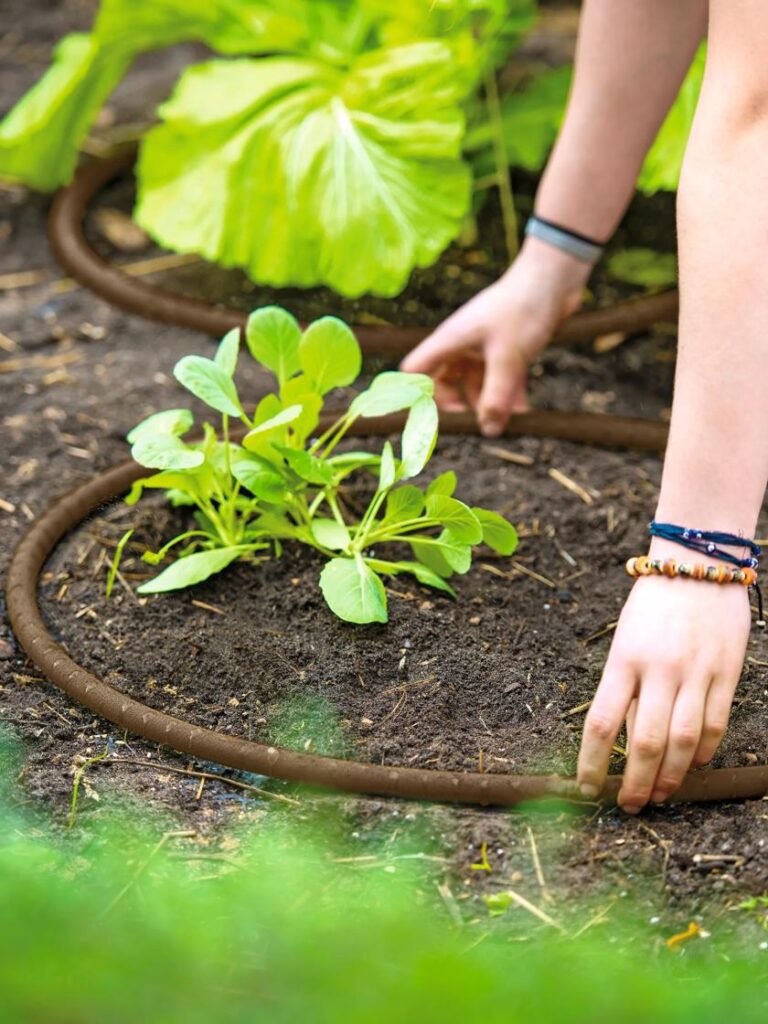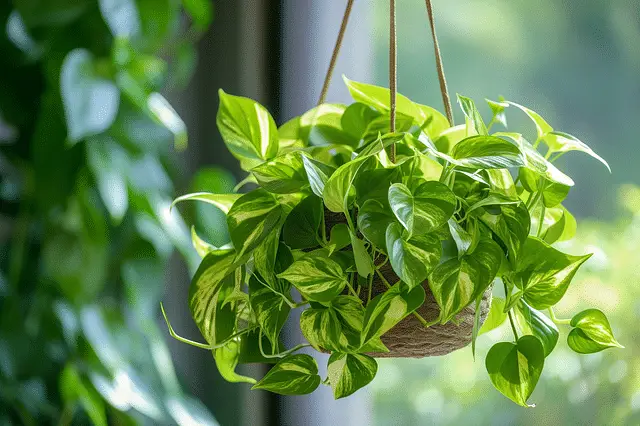How to Increase Your Yield and Potency with Super Cropping (Supercropping) Techniques
Table of Contents
Understanding Super Cropping and its Benefits
Super cropping is a technique that has gained popularity among gardening enthusiasts, and for good reason. By deliberately damaging the plant in a controlled manner, you can stimulate growth and increase yields. This method involves gently bending and manipulating the branches of the plant to create strategic stress points, which in turn promotes the growth of new shoots and strengthens the overall structure.

The benefits of super cropping are numerous. Firstly, it allows for better light penetration throughout the canopy, ensuring that all parts of the plant receive adequate light for photosynthesis. This leads to more efficient energy conversion and ultimately, increased plant productivity. Secondly, super cropping helps to control plant height and canopy size, making it an ideal technique for managing space in indoor gardens. Finally, by encouraging the development of additional colas, super cropping can significantly boost overall yields, resulting in a more abundant harvest.
Selecting the Right Plants for Super Cropping
When selecting the right plants for super cropping, it is important to consider their genetic potential and overall health. Ideally, you should choose plants that are strong, vigorous, and have a robust root system. Look for plants with strong stems and thick branches as they will be more resilient to the stress of super cropping. Additionally, consider the specific strain or variety of the plant, as some may respond better to super cropping than others.

Another key factor to consider is the growth stage of the plants. Super cropping is typically performed during the vegetative stage when the plants are actively growing. This allows the plants to recover more quickly from the stress and encourages the development of new branches and buds. Avoid super cropping during the flowering stage as it can disrupt the growth and development of flowers, ultimately impacting the final yield. By carefully selecting plants that are strong and healthy, and timing the super cropping technique appropriately, you can maximize the benefits and success of your gardening endeavors.
Identifying the Ideal Time to Super Crop
Identifying the ideal time to super crop is crucial to ensure the success and health of your plants. Timing is everything when it comes to implementing this technique. Super cropping involves strategically damaging or bending the stems and branches of your plants to promote better growth and increased yield.
The best time to super crop is during the vegetative stage, before the plants start flowering. This allows the plants to recover and adapt to the stress caused by the manipulation before entering the crucial flowering phase. Typically, super cropping is done when the plants are around three to four weeks old, and their stems have become sturdy enough to handle the bending process. It is important to avoid super cropping during the late flowering stage, as the risk of damaging the delicate flowers and reducing the yield is higher. By identifying and executing the ideal timing for super cropping, you can maximize the benefits and enhance the overall health and productivity of your plants.
• Super cropping should be done during the vegetative stage, before flowering
• The plants should be around three to four weeks old and have sturdy stems
• Avoid super cropping during the late flowering stage to prevent damage to delicate flowers and reduce yield
• Timing is crucial for allowing plants to recover and adapt before entering the flowering phase
• Identifying the ideal time for super cropping can maximize benefits and enhance plant health and productivity.
Preparing Your Plants for Super Cropping
To maximize the success of super cropping, it is essential to properly prepare your plants beforehand. Preparing your plants for super cropping involves a combination of careful observation and precise execution.
First, it is important to select plants that are suitable for super cropping. Look for plants with sturdy branches and a strong overall structure. These traits will make the process of bending and manipulating the branches much easier and less likely to cause damage. Additionally, choose plants that are in the vegetative stage of growth, as they tend to be more flexible and resilient.
Once you have identified the right plants, it is crucial to provide them with ample nutrition and hydration. This can be achieved by implementing a nourishing feeding regimen and making sure your plants are receiving the appropriate amount of water. Well-nourished, hydrated plants are more likely to withstand the stress of super cropping and recover quickly.
Here’s a table on preparing your plants for super cropping:
| Step | Action |
|---|---|
| 1 | Choose Healthy Plants: Select robust and healthy plants for super cropping. Weak or stressed plants may not respond well. |
| 2 | Vegetative Growth Stage: Perform super cropping during the vegetative growth stage when plants are more flexible and resilient. Avoid doing it during flowering. |
| 3 | Select Target Branches: Identify the branches you want to super crop. Choose branches that are tall and have a good distance between nodes. |
| 4 | Softening Up: Gently squeeze and massage the targeted branches between your fingers to make them more pliable. This helps in reducing the risk of breaking. |
| 5 | Bend, Don’t Break: Using your thumb and forefinger, slowly bend the selected branches at a 90-degree angle. Do this in a smooth and controlled manner to avoid snapping the branch. |
| 6 | Support if Necessary: Provide additional support to the super cropped branches if needed. Use ties or stakes to keep them in place until they recover. |
| 7 | Monitor and Adjust: Keep an eye on the super cropped branches for a few days. If necessary, make adjustments to the support or revisit the technique on other branches. |
| 8 | Encourage Healing: Super cropping stimulates plant growth hormones. Encourage healing by allowing the plant some time to recover before implementing further training techniques. |
In addition to nutrition, it is advisable to strengthen your plants by enhancing their root systems. This can be achieved through the use of beneficial microbes and root growth enhancers. These products will help stimulate root growth and improve overall plant resilience, making them better equipped to handle the stresses of super cropping.
By carefully selecting plants with strong structures, providing them with adequate nutrition and hydration, and enhancing their root systems, you will set the foundation for successful super cropping. A well-prepared plant is more likely to respond positively to the super cropping technique and ultimately yield better results.
Techniques for Super Cropping
Super cropping is a technique that requires precision and careful handling of your plants. One of the most common techniques for super cropping is the “tie-down” method. This involves gently bending the main stem of the plant until it becomes pliable, then securing it in place with soft ties or plant wire. By doing this, you are encouraging lateral growth and creating a bushier and more productive plant.
Another technique for super cropping is the “pinch and twist” method. This involves pinching the stem between your thumb and forefinger, and then giving it a gentle twist. This helps to weaken the stem, allowing it to be bent and shaped without causing excessive damage. It is important to note that this technique should only be applied to young, flexible stems, as older and thicker stems may not respond well to this method.
To know more about super cropping, watch this video!
When super cropping, it is crucial to remember that you are applying pressure to the plant, so it is essential to be gentle and cautious. Always wear gloves to protect your hands and avoid damaging the delicate tissues of the plant. Additionally, it is recommended to super crop during the plant’s vegetative stage, as this is when the plant is most resilient and can recover more quickly from the stress of bending and shaping.
By using these techniques for super cropping, you can effectively manipulate your plants to maximize their potential and achieve impressive yields. However, it is essential to mention that this technique may not be suitable for all plant species, so it is crucial to research and understand the specific needs and characteristics of your chosen plants before applying super cropping techniques.
Maintaining Proper Care after Super Cropping
After super cropping your plants, it is crucial to provide them with the proper care to ensure their continued growth and health. One important aspect of maintaining proper care is to monitor your plants closely for any signs of stress or damage. This includes regularly checking the stems and branches that have been super cropped to make sure they are healing properly. If you notice any issues such as wilting, discoloration, or rotting, it is essential to address these problems promptly.

In addition, it is important to continue providing your plants with the necessary nutrients and water they need to thrive. Super cropping can temporarily stress your plants, so it is vital to support their recovery by feeding them with a well-balanced nutrient solution. Remember to adjust the nutrient levels according to the specific requirements of your plant species. Proper watering is also crucial, as both overwatering and underwatering can harm your plants. Monitor the moisture levels of the soil or growing medium and water accordingly to maintain an optimal balance. By providing consistent care and attention, you can help your plants recover and promote healthy growth even after the super cropping process.
Enhancing Nutrient Uptake through Super Cropping
To enhance nutrient uptake and maximize the potential of your plants, super cropping is an effective technique worth considering. By strategically manipulating the stems and branches of your plants, you can optimize nutrient absorption and distribution, leading to stronger and healthier growth.
One way super cropping enhances nutrient uptake is by creating additional stress on the plant. When you gently bend or manipulate the branches, it triggers a natural response known as hormesis. This response prompts the plant to produce beneficial compounds, such as phytohormones, which help in nutrient absorption and utilization. Additionally, this stress stimulates the plant to strengthen its vascular system, improving the transport of essential nutrients throughout the plant.
Supporting Plant Growth with Super Cropping
Super cropping is not only a technique that helps in controlling the height and shape of your plants, but it also plays a crucial role in supporting their overall growth. By strategically damaging the branches, super cropping triggers a response in the plant that redirects the flow of nutrients and energy to the damaged area, stimulating new growth and strengthening the entire plant structure. This results in stronger branches, thicker stalks, and increased nutrient uptake, ultimately supporting the plant’s growth and vitality.
One of the key benefits of super cropping for supporting plant growth is that it allows for better light penetration throughout the canopy. By bending and training the branches, you can create a more even distribution of light, ensuring that all parts of the plant receive the necessary amount of light for optimal photosynthesis. This not only reduces the risk of shaded areas that can hinder growth but also encourages the development of robust and healthy buds, leading to higher yields. Additionally, by strengthening the branches through super cropping, the plants can better support the weight of heavy buds during the flowering stage, preventing breakage and maximizing yields.
Maximizing Yield through Super Cropping
When it comes to maximizing yield through super cropping, there are several techniques and strategies that can help you achieve exceptional results. One important aspect to consider is selecting the right plants for super cropping. Choose plants that have strong and sturdy stems, as this will make the process of bending and manipulating the branches much easier. Additionally, opt for strains that have a natural tendency to respond well to high-stress training techniques, as they are more likely to produce optimal yields.
Another key factor in maximizing yield is identifying the ideal time to super crop your plants. It is crucial to wait until the plants have reached a certain level of maturity and have developed a strong root system. Usually, this occurs during the vegetative stage when the plants are actively growing. By super cropping at the right time, you can ensure that the plants have enough time to recover and redirect their energy towards producing larger and denser buds. However, it is essential to avoid super cropping during the flowering stage, as it may cause stress and potentially diminish yield potential.
Increasing Potency with Super Cropping
Super cropping is a technique that can not only increase the overall yield of your plants but also enhance the potency of the final product. By strategically damaging the plant’s stems, you are encouraging it to redirect its energy towards producing more trichomes, which are the resin glands responsible for the production of cannabinoids and terpenes. As a result, super cropping can lead to a higher concentration of these compounds, resulting in a more potent harvest.
When it comes to increasing potency with super cropping, it’s important to understand the timing and technique involved. The ideal time to super crop your plants is during the vegetative stage when they are actively growing. By carefully bending or twisting the stems, you can create small areas of stress that trigger the plant’s defensive response, causing it to produce more resin and ultimately increasing potency. However, it is crucial to be gentle and precise during this process to avoid causing excessive damage that could harm the overall health of the plant. Proper technique and timing are key when it comes to reaping the benefits of increased potency through super cropping.
Common Mistakes to Avoid when Super Cropping
When it comes to super cropping, there are a few common mistakes that gardeners should avoid in order to ensure successful outcomes. One of the most common errors is applying too much force when bending the branches. While it is important to gently manipulate the stems to promote lateral growth and enhance overall plant structure, excessive force can lead to damage, breakage, or even uprooting. Remember that the goal is to stress the plant in a controlled manner, not cause harm.
Another mistake to avoid is super cropping too late in the vegetative stage. Super cropping is most effective during the early to mid-vegetative stage when plants are still flexible and able to recover quickly. Waiting too long to super crop can result in slower healing, reduced growth, and potential stunting. It is crucial to identify the optimal time for super cropping based on the specific plant species and its growth patterns. This will ensure that the technique is performed at the right developmental stage, maximizing its potential benefits for the overall health and productivity of the plant.
Troubleshooting Issues in Super Cropping
When it comes to super cropping, gardeners may encounter a few common issues along the way. One of the most prevalent problems is improper technique, which can lead to plant damage or even death. It is crucial to ensure that you are using the correct method when super cropping your plants. Additionally, inadequate healing and recovery time after the procedure can result in slower growth and diminished yields. To avoid these issues, it is important to carefully follow the proper steps for super cropping, including making clean cuts and allowing sufficient time for the plant to heal before resuming normal care.
Expert Tips for Successful Super Cropping
Super cropping, when done correctly, can significantly enhance the overall health, yield, and potency of your plants. To ensure successful super cropping, it is essential to follow some expert tips that will help you achieve optimal results.
First and foremost, it is crucial to choose the right plants for super cropping. Not all plants respond well to this technique, so it is essential to select plants that have flexible stems and strong genetics. Indica-dominant strains often work best for super cropping, as their sturdy branches are more likely to withstand the stress caused by the technique. Additionally, it is recommended to super crop plants that are in the vegetative stage, as they can recover more efficiently and continue to grow vigorously after the procedure.
Another key aspect of successful super cropping is identifying the ideal time to apply this technique. It is advisable to super crop when plants are in their early vegetative stage and have reached a height of around 12-18 inches. At this stage, the stems are still young and pliable, making them more responsive to bending and manipulation. Timing is crucial, as attempting to super crop plants that are too mature or too close to the flowering stage can result in reduced yields and stress-related issues.
What is super cropping and why is it beneficial?
Super cropping is a technique used in gardening to stress the plants by gently bending or squeezing the stems. This method helps increase yields, promotes lateral growth, and improves overall plant health by enhancing nutrient uptake and light distribution.
How do I choose the right plants for super cropping?
It is recommended to select plants with sturdy stems and flexible branches, as they are more likely to respond well to super cropping. Indica-dominant strains and plants in the vegetative stage are generally suitable for this technique.
When is the ideal time to super crop my plants?
The best time to super crop your plants is during the vegetative stage when they are actively growing and more resilient. Avoid super cropping during the flowering stage as it may cause stress and hinder bud development.
How can I prepare my plants for super cropping?
Before super cropping, ensure your plants are adequately watered and well-nourished. This will make the stems more pliable and less prone to breakage. It is also advisable to conduct super cropping in a clean and sterile environment.
What are some effective techniques for super cropping?
There are various super cropping techniques, including the pinch and roll, the bending method, and the twist and snap technique. Each technique involves applying gentle pressure to bend or break the inner tissues of the stem without completely severing it.
How should I care for my plants after super cropping?
After super cropping, it is crucial to provide proper support to the bent stems using plant ties or stakes. Additionally, maintaining a consistent watering and feeding schedule, along with regular monitoring for any signs of stress or damage, is essential.
Can super cropping enhance nutrient uptake in plants?
Yes, super cropping can enhance nutrient uptake in plants. By stressing the stems, the plant increases its vascular activity, allowing for improved nutrient distribution throughout the plant.
How does super cropping support plant growth?
Super cropping promotes lateral growth by redirecting the plant’s energy to lower branches and bud sites. This technique encourages a bushier plant structure, increasing the potential for more flowering sites and higher yield.
Can super cropping maximize my overall yield?
Yes, super cropping can maximize your overall yield. By promoting lateral growth and increasing the number of flowering sites, super cropping allows for a larger harvest compared to plants that have not been super cropped.
Does super cropping have any effect on the potency of the plant?
Super cropping does not directly affect the potency of the plant. However, by increasing the number of flowering sites and overall yield, it indirectly contributes to a potentially higher total cannabinoid content.
What are some common mistakes to avoid when super cropping?
Some common mistakes to avoid when super cropping include applying excessive force and breaking the stem completely, super cropping during the flowering stage, and not providing proper support to the bent stems after the procedure.
What can I do if I encounter issues during the super cropping process?
If you encounter issues during super cropping, such as stem breakage or excessive stress, it is best to immediately provide support to the damaged area using plant ties or splints. Adjust your plant care routine accordingly and monitor for any signs of recovery or further complications.
Can you provide some expert tips for successful super cropping?
1. Start super cropping during the vegetative stage for best results.
2. Use clean and sterile tools to minimize the risk of infections.
3. Avoid super cropping plants with weak or thin stems.
4. Gradually increase pressure when bending or squeezing stems to prevent damage.
5. Monitor your plants closely after super cropping and make necessary adjustments to their care routine.

Pallavi Gupta is a burgeoning writer at SouthElMonteHydroponics, blending her passion for data analysis with a keen interest in biotechnology. Currently pursuing a Bachelor’s in Biotechnology at Amity University, Pallavi delves into the intricacies of life sciences while gaining hands-on experience in the exciting world of data analysis. Her unique background provides a fresh perspective on hydroponic farming, as she explores the intersection of biotechnology and sustainable agriculture. Through her writing, Pallavi aims to bridge the gap between data-driven insights and innovative farming practices, inspiring others to harness technology for a greener future.






